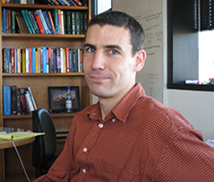Projects
Click the speaker's name to see the project.
Mini courses
Tetsuya J. Kobayashi >>
Christian Maes >>
Armita Nourmohammad >>
Olivier Rivoire >>
Gasper Tkacik >>
Mini courses
 >> Tetsuya J. Kobayashi, University of Tokyo, Japan
>> Tetsuya J. Kobayashi, University of Tokyo, Japan
An integrative view of biological adaptation from single-cell to population
>> Christian Maes, Katholieke Universiteit, Leuven, Belgium
Non-dissipative aspects in nonequilibriumProject: give the frenetic contribution to linear response around steady nonequilibrium processes with Levy noise.
Projects
A. Look at the result in the paper Christian Maes and Karel Netočný, Non-reactive forces and pattern formation induced by a nonequilibrium medium
Then:
a) study the pattern formation when the probes are NON-identical, meaning that their interaction with the colloids is different. What patterns are stabilized?
b) Suppose i want to stabilize a particular pattern, can I inverse-engineer an interaction between the probes and the colloids that would give it?
c) Can one rigorously take the thermodynamic limit? Can there be a phase transition/symmetry breaking result, in particular upon adding a small attractive interaction between the probes?
d) Is there still stabilization of the crystal when the colloids are not driven but become active (run-and-tumble) particles as in arXiv:1711.08474v2 .
B. Active particles experiencing defects: consider run-and-tumble processes, very much like in the paper arXiv:1711.08474v2 but make the bias v(x) inhomogeneous (e.g. taking two values v1 > v2 depending on the position on the circle). Can one still obtain the stationary densities? Diffusion properties? Can one consider the system on the circle and see if there is domain formation when one adds an exclusion interaction between the particles?

>> Armita Nourmohammad, Max Planck Institute for Dynamics and Self-Organisation, Goettingen, Germany
Statistical physics of molecular evolution across scales
Projects
I will cover topics on genotype and phenotype (function) evolution and argue that phenotypic evolution becomes more predictable due to dimensionality reduction [1,2]. Phenotypes are encoded by many genomic loci and remaining functional introduces long-range genomic interactions, and hence, significant constraints during evolution. I would like for the students to quantify predictability of evolution, both for the state of population (related to the entropy in the stationary state) and its dynamics, i.e., how much we can know about the future given the current state, which could be e.g. formulated as the mutual information between population states separated over time [3]. Most importantly, we want to quantify predictability of population states in time-dependent environments, dependent on the environmental fluctuations [2]. How does the transition from genotypic states to phenotypic states impact the evolutionary predictability in all these cases?
Some references:
[1] A. Nourmohammad, S. Schiffles and M. Lässig (2013) Evolution of molecular phenotypes under stabilizing selection, J. Stat. Mech. P01012
[2] T. Held, A. Nourmohammad and M. Lässig (2014) Adaptive evolution of molecular phenotypes, J. Stat. Mech, P09029
[3] W. Bialek, I. Nemenman, N. Tishby (2008) Predictability, complexity and learning,arXiv:physics/0007070
[4] M. Lässig, V. Mustonen, A. Walczak (2017) Predicting evolution, Nature Ecol. Evol. 1, 077
[5] A. Nourmohammad, T. Held, and M. Lässig (2013) Universality and predictability in molecular quantitative genetics Current Opinion in Genetics and Development 23, 684-93
 >>Olivier Rivoire, College de France, Paris, France
>>Olivier Rivoire, College de France, Paris, France
Models of information processing in evolving populations
-

>> Gasper Tkacik, Institute of Science and Technology, Vienna, Austria
Information processing in neural and gene regulatory networks